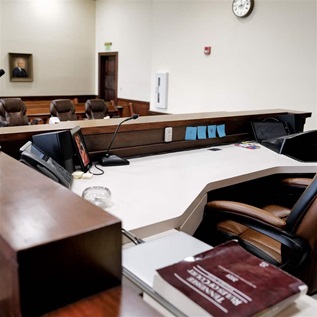New Data Show Big Increases in Private Student Loan Borrowing
New federal data show that the percentage of all undergraduate students who borrowed private student loans jumped from 5 percent in 2003-04, to 14 percent in 2007-08. At proprietary (for-profit) colleges and universities, the percentage of students who took out these loans skyrocketed from 13 percent in the 2003-04 school year, to 42 percent last year.
Private student loans are typically more expensive than federal student loans, with higher, variable interest rates and far fewer options for borrowers in repayment. Even though financial aid experts agree that these loans should be used only as a last resort, one in four private student loan borrowers in 2007-08 didn't take out any federal Stafford loans that year. Federal Stafford loans are available to almost all students, regardless of income.
“These data are troubling because private student loans are more like credit cards than financial aid, and have very little in common with federal student loans,” said Lauren Asher, Acting President of the Institute for College Access & Success, which runs the Project on Student Debt. “Too many students are missing out on federal loans and going straight to one of the riskiest borrowing options.”
Students at proprietary schools of all levels and private nonprofit four-year schools are disproportionately represented among private student loan borrowers in 2007-08. Only about 13 percent of all undergraduates attend nonprofit four-year schools, but they make up 22 percent of all private loan borrowers. About 9 percent of undergraduates attend proprietary schools, but they represent 27 percent of private loan borrowers.
These data reflect borrowing levels before the credit crunch, which hit the private student loan industry hard in the spring of 2008. Still, lenders aggressively market private loans directly to students, and although private loans are more likely now to require a co-signer and a higher credit score, these loans are still available, especially from large banks.
“Unfortunately, private loan borrowers remain at the mercy of their lenders if they are having trouble making payments in these tough times,” said Asher. The Project on Student Debt supports stronger consumer protections for private loans, such as clearer disclosure of terms for prospective borrowers and fair treatment of this risky debt in bankruptcy, positions outlined in their 2009 Policy Agenda.
The figures in this release were calculated by the Project on Student Debt using data from the National Postsecondary Student Aid Study, a federal survey of college students conducted every four years by the National Center for Education Statistics that was released last week. The data reflect borrowing activity by undergraduate students who are US citizens or permanent residents, during one academic year at all types of postsecondary institutions. The data should not be confused with cumulative figures for graduating seniors, which will not be released until next month. The Project on Student Debt will calculate and release more facts about student debt at that time.
Quick Facts:
- The percentage of undergraduates borrowing private loans increased dramatically, from 5% in 2003-04 to 14% in 2007-08.
- Of private loan borrowers in 2007-08, 26% did not take out any federal Stafford loans, up from 22% in 2003-04. Fourteen percent of all private loan borrowers did not apply for federal financial aid, and 12% filled out the FAFSA but did not take out a Stafford loan.
- Proprietary schools had the largest proportion of students taking out private loans, and the steepest increase in private loan borrowing, from 13% in 2003-04 to 42% in 2007-08.
- In the 2007-08 year, proprietary schools at all levels and private (nonprofit) four-year schools had disproportionate numbers of students taking out private loans.
- Students attending proprietary schools composed about 9% of total undergraduates, but 27% of those taking out private loans.
- Students attending private four-year schools composed about 13% of total undergraduates but 22% of those taking out private loans.
- In contrast, the percentage of private loan borrowers who attend public four-year schools (28%) is basically the same as the percentage of undergraduates overall who attend public four-year schools (29%).
- Students attending higher tuition colleges were most likely to borrow private loans in 2007-08.
- Schools charging more than $10,000 in tuition and fees enrolled about 16% of undergraduates overall, but 37% of private borrowers.
- In fact, 32% of students at schools charging more than $10,000 in tuition and fees took out private loans, compared to 11% of students at lower cost colleges.
The Project on Student Debt is supported by The Pew Charitable Trusts, the William and Flora Hewlett Foundation, the Ford Foundation, the BayTree Fund, and individual donors. The Project on Student Debt is an initiative of the Institute for College Access & Success, an independent, nonprofit organization working to make higher education more available and affordable for people of all backgrounds. For more information see www.projectonstudentdebt.org and www.ticas.org.
Pew is no longer active in this line of work, but for more information, visit the Project on Student Debt Web site or visit the The Project on Student Debt on PewHealth.org.






